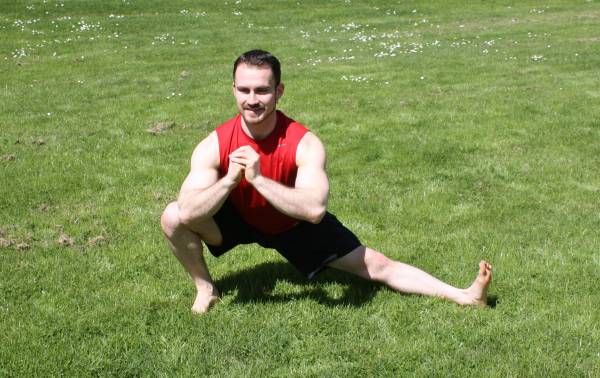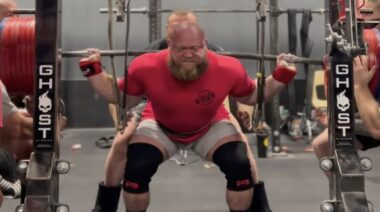No one would ever admit his or her training programs aren’t functional. That would be heresy! Maybe you think the term “functional” is overused and as long as you deadlift, pull up, press, clean, and squat you are good.
The reality is there are aspects of functional training that are more specific than a general philosophy of “making people better at life or sport.”
No one would ever admit his or her training programs aren’t functional. That would be heresy! Maybe you think the term “functional” is overused and as long as you deadlift, pull up, press, clean, and squat you are good.
The reality is there are aspects of functional training that are more specific than a general philosophy of “making people better at life or sport.”
What Is True Functional Training?
With functional training came the now famous statement, “train movement, not muscles.” This becomes an easy rallying cry for those trying to move from bodybuilding methods to a functional training model. Yet, even with the popularity of this statement, most coaches and athletes never get to the depth of what training movement is really all about.
“One of the great concepts for people to understand is how to resist the frontal plane. This teaches how to brace and works the small stabilizers of the lateral chains.”
Let’s admit it, developing a saying that could reflect the major difference in the goals of functional versus bodybuilding programs was important, especially as a means of communicating with the general public. The problem was we started to oversimplify this statement in our coaching. Professionals began to see movement only in terms of the following patterns:
- Squat
- Hip Hinge
- Push
- Pull
I’ll be the first to say you can develop a nice foundational program from this format, but this level of depth doesn’t really make functional training anything special. Not only do we end up missing important patterns of motion like stepping and rotation, but we also don’t take into account the various planes of motion and the combinations of movements that make up real life and sporting movement.
It is rare to find an everyday action that is purely a hinge, squat, push, or pull. Most everyday and sporting actions are combinations of several patterns as our body is moving in various directions.
The Way You Need to Move
In order to make this point more clearly I want to focus on how to apply this in one of the most misunderstood concepts – lateral or frontal plane strength and power. I can hear the moans and groans as you read those words. “Is he going to say I have to do a bunch of these boring lateral lunges? I already do those! Well, once in awhile.”

Even the strongest athletes can be humbled by simple movements in the lateral plane.
Before you jump ship and try to rationalize that deadlifting and squatting takes care of everything, let me tell you – it doesn’t. I was partly motivated to write this article after listening to a Tim Ferris podcast where he interviewed Dr. Peter Attia.
Mr. Ferris told the story of how he and Dr. Attia went to the gym and worked on lateral plane movements. Laughing at himself, Ferris admitted how humbled, weak, and exhausted even a little bit of training in the lateral plane made him.
I admire Ferris for being brave enough to admit something most of us won’t. We don’t really spend enough time on the things we should. Rather, we do the things we like.
Now, just because it makes you tired, doesn’t mean you have to go run out and do a bunch of lateral lunges, rather you do need commit serious time to lateral plane movements.
As Dr. Attia went on to explain, these movements help with our ankle, knee, and hip alignment. That means all that IT band pain you have could be because of this lateral instability. How about that power you don’t have? Yeah, could be the same problem, as well.
If you don’t like Dr. Attia’s view on this, how about world renowned expert Dr. Stuart McGill? In his legendary book Ultimate Back Fitness and Performance, Dr. McGill stated:
[R]etraining the gluteals cannot be performed with traditional squat exercises that utilize the barbell on the back….In contrast to the traditional squat, a one-legged squat activates the gluteus medius immediately to assist in the frontal plane drive necessary for leaping, running, etc.
Dr. McGill went on to lay out a specific strategy of retraining the frontal plane muscles, starting from ground-based and moving to a one-legged squat series for more advanced progressions. If you think about it, the value of the frontal plane explains why the side plank gets more attention from Dr. McGill than the front plank.
“If you follow these guidelines you will notice that you not only perform better and become more resilient, but you probably begin to live better. “
Lateral-Based Program Applications
What happens to a lot of people when they consider adding something like frontal-plane based training to their program is that they casually put in a movement here or there without much thought about progression or purpose. So, let’s cover some guidelines that will allow you to benefit from lateral-based training.
- Start Slow: If you have never performed this type of training, then start slowly. Do not make an entire program of lateral-based movements.
- Resist Motion First: One of the great concepts for people to understand is how to resist the frontal plane. This teaches how to brace and works the small stabilizers of the lateral chains.
- Build Mobility: “If you don’t use it, you lose it”really pertains to movements in the frontal plane. If you haven’t been doing much of this type of training, then first work on building mobility, work on resisting frontal plane forces, and use hip-hinge based movements that are not as demanding upon mobility as the lateral squats and lunges.
- Alternate: You can alternate days of lower- or upper body-dominant frontal plane drills (there are plenty of examples in the video), as well as alternating days of resisting or moving through the frontal plane.
- Prioritize It: Let’s face it, the lower down the program, the less likely we are to perform the movements or do so with any intensity and focus. Place some of these movements first. I guarantee they won’t fatigue you so much you can’t do your favorite lifts. More than likely, they will make your performance better.
If you follow these guidelines you will notice that you not only perform better and become more resilient, but you probably begin to live better. Dr. Attia referred to this, as well. You’ll see improvements in your actions of every day living – from gardening, to walking, to just things we want to do better as we age.
Check out these related articles:
- Lower Extremity Pain? Check Your Lateral Sub-system
- Build Your Original Strength Through Crawling
- Is Stability Training Dumb?
- What’s New On Pulse Beat Fit Today
References:
1. Tim Ferris, “The Tim Ferris Show, ” episode 50, originally aired December 17, 2014.
2. Stuart McGill, Ultimate Back Fitness and Performance, (2004).
Photo 1 courtesy of CrossFit Empirical.






